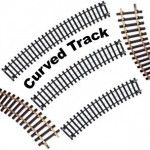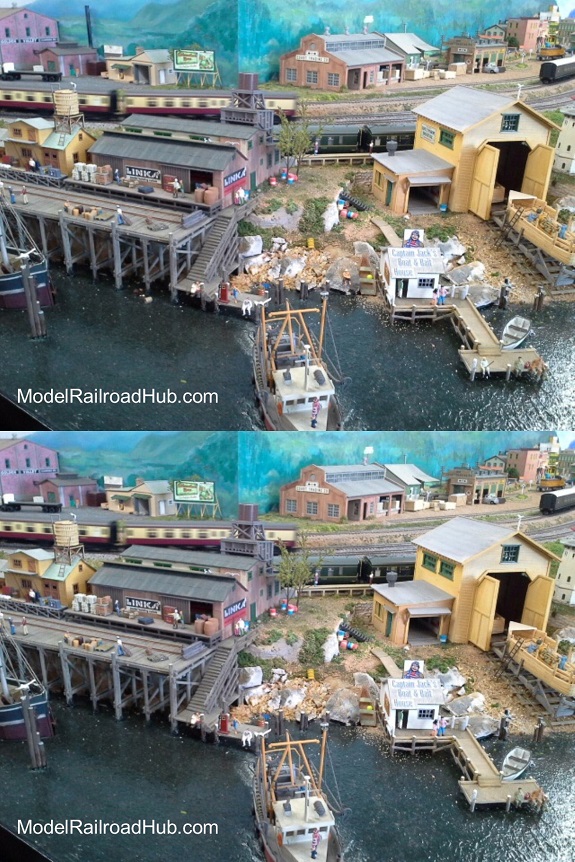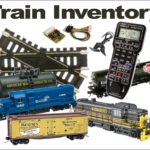Everything on model trains, model railroads, model railways, locomotives, model train layouts, scenery, wiring, DCC and more. Enjoy the world's best hobby... model railroading!
JUST RELEASED! Download, print, and build 3 retro 1950’s-1960’s model buildings
New to the range of 200+ scale model plans available from https://www.modelbuildings.org
Japanese Tomytec Products – Info Needed
Ron has this question:
“Hi, is anybody familiar with Tomytec products? I know that most of them are N scale. I was wondering if Tomytec products are available in HO and O scale. Thanks in advance for all responses.”
Add your comment below.
Old Style Station Lamps and Building Lights
Mark model HO scale and asks others in the hobby:
“I have just purchased building lights and old style station lamps from China. I was thinking that they would be easy to install and use. Wrong!! I think they need a capacitor added to make them work. Do they? If so, how do I find out what type to use. Many thanks.”
Mark you can use the COMMENTS link to upload a photo if you think it will assist readers to provide you helpful advice.
Ballast Coverage
Marshall models HO and asks:
“I would like to start ballasting my track with Woodland Scenics medium ballast and need to know if there is a rule of for how much material might be used for a specified length of track. My track, which totals some 200 foot, sits on a cork roadbed. Thank you.”
Have your question published on the blog by using one of the many Ask A Question links on this page.
Will Any Decoder Do?
Ben sent in this question for readers:
“This might sound stupid but can I use any decoder model in a locos? I ask this because I will be soldering the connections regardless and know the frames can vary between manufacturers, so can I still choose any decoder, or will I need specific decoders for certain locos?
Add or view the COMMENTS below.
Using Double Pole Double Throw Switches With DCC
Callum asks readers:
“When using Double Pole Double Throw (DPDT) switches with DCC, is it advisable to stop my loco first, or is it okay to throw the switch while my loco is running? My thinking is that I should stop it first?”
Send in your question for publication using one of the many Ask a Question links on this blog.
Digital Control on Garden Tramway
Bill T sent in this pic to share:
“Always enjoy your blog and information. I am in Scotland, so here a picture of my Garden tramway. I use Z21 to digitally and control it on my iPads and iPhone. When visitors come we can all run trams. There are 14 trams to choose from for the system all digitised. The overhead is not electrified but the pantographs correctly run on it to make it authentic tramway practice. Share on your site if you wish.”
SPOT THE DIFFERENCE – Model Railroad Scene
I’ve had numerous requests to publish some more SPOT THE DIFFERENCE puzzles as it’s been some time since I ran the last one. See how you go with this model railroad layout photo. At first glance the photos look identical, but there are actually several differences. How many can you find?
Simply add your answers using the COMMENTS link below.
Making Track Curves Too Tight
With the pr essures of fitting everything into a layout, there will always be the temptation to make the curves tighter than they should be. This is typically fraught with problems, even if you have done some test runs with locomotives and cars around the curve.
essures of fitting everything into a layout, there will always be the temptation to make the curves tighter than they should be. This is typically fraught with problems, even if you have done some test runs with locomotives and cars around the curve.
Even if the trains run okay –
- Does the tight track curve look natural? If you are modeling a modern era railroad, rolling stock lengths are much longer these days than they were in the past. Long cars make the curves look even sharper than they are.
- Would a real railroad have curves that tight? The answer to this is always a resounding“no.” Real railroad curve radii are much larger than can be accurately modeled in a reasonable space. The best that can be done is to make the curves as large as your space will permit, then use some scenic tricks to distract the viewers from the appearance.
- What happens when you buy a new loco or longer car that won’t make it safely around the curve? This actually goes back to the choice of era you choose to model. A setting with large late steam era articulated locos is not a good decision for a very limited space.Logging and mining or switching puzzle layouts with shorter rolling stock are better choices if your situation requires sharp curves.
The golden rule is this: make the minimum radius AT LEAST as large as that recommended for the longest car you plan to run on your layout. That way you won’t have any regrets later.
Insulfrogs or Electrofrogs
Duncan is into N gauge and sent in this question:
“Hi just starting in N gauge, I am planning my DCC railway and want to know about turnouts, do I need Insulfrogs or Electrofrogs?”
Use an Ask a Question link to send in your question for publication.
Wiring Street Lights on a Model Railroad Layout
Daniel sent in this question:
“ I am installing numerous street lights on my O scale layout. How can I connect them to power/neutral wiring without soldering all of those connections. Can I use termination blocks? Or are the numerous connections unavoidable? Thanks”
Send in your question using one of the many the ASK A QUESTION links.
Dead Rail System
Ian models HO and asks readers for opinions on dead rail systems – “Any thoughts anyone
if so best systems available please?”
Dead Rail Definition – One of two rails that are laid across a railway track-scale platform, but which are not connected with the weighing beam, and that will permit a locomotive, or other load exceeding the capacity of the scale, to move across the scale.
Power To Layout
Gary has this question:
“I am brand new to model railroading & will be setting-up a small N Scale layout (less than 4′ x 8′)using Kato Unitrak. I also have a Kato locomotive that has DCC with LokSound. After wiring the bus (with feeders) can I initially run the locomotive using the Kato Power Controller (22-018) that I have and then in the near future switch over to the NCE Power Cab I have been looking at? Or, should I just bite the bullet and go out and get the Power Cab to begin with? I just can’t seem to find any articles that address this issue. Let me thank you in advance for any help/guidance any of you may be able to provide.”
3-Way Turnout Wiring
Ron asks:
“Does anyone have any experience with Walthers DCC friendly 3-way turnouts wiring?”
Perhaps Ron could elaborate on his question explaining the nature of his problem.
Wiring 2 Kato Switches With 1 Controller
Richard asks:
“Is it possible to wire 2 Kato switches to so that when I throw the controller lever they both switch? I have the switches on opposite sides of my layout with a half circle connecting them to my main line.“
Problem With Switch Turnout Connectivity
Michael C asks:
“I’m using Atlas switches and turnouts but the connectivity is not as good as it used to be. What should I do?”
Submit your question using the ASK A QUESTION link below.
Recording Data and Inventory of Trains and Accessories
“I did a few excel spreadsheets when I was employed and thought I should start a record of my growing collection of locos, cars, coupler types etc. I then started to think of all the other things I could record like where I purchased the item, price and date, manufacturer, model number, prototype length in feet, maintenance history, wheels configuration… there’s probably no limit if I wanted to go crazy. My question is this – should I use a spread sheet which I could backup on a cloud or portable hard drive, or should I purchase software that will do the job, if so what software? Also, what data should I record and how should I organize it into groups? A lot to ask I know, but I value feedback from anyone who has already made these decisions on where to start and where to finish. Thanks in advance.”
Add or view comments below.

















